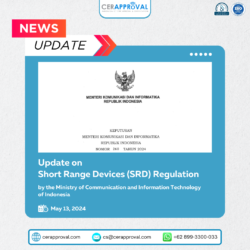Update on Short Range Devices (SRD) Regulation
The Ministry of Communication and Information Technology of the Republic of Indonesia has issued Ministerial Decree No. 260 of 2024, which regulates the technical standards for Short Range Devices (SRD). This regulation replaces the previous Directorate General of Resources and Post and Informatics Equipment Regulation No. 161 of 2019, and introduces significant changes to the Read more about Update on Short Range Devices (SRD) Regulation[…]



